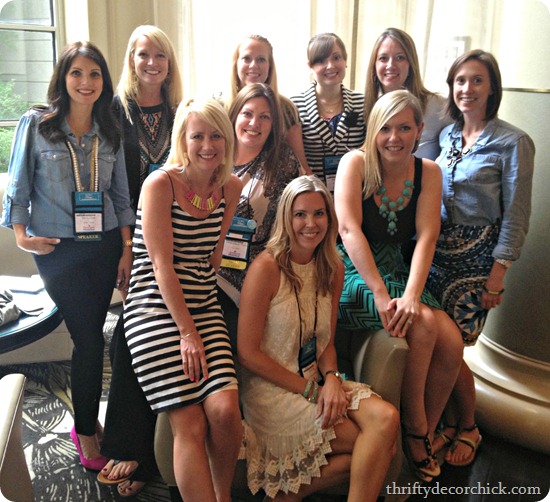Good Monday to you all! Wow, it’s been a total whirlwind of a week! I’m not sure I’ve ever packed more into seven days in my life.
Bear with me as I share a little bit of it with you today – it’s been an wonderful, overwhelming, lovely week and it really couldn’t have gone much better!
First up – Haven 2013! For those of you who don’t know, Haven is a conference dedicated to DIY and decor bloggers specifically. It’s the first of it’s kind because we (the team) knew there was a need for it – and a few years ago we decided it was time to make it happen!
This was our second year and it was even better than the first!:

This is about half the group – all together we had about 450 attendees (that includes sponsors) so it was much bigger than last year. I’m not sure we’ll go too much bigger because we love the feel of this size – we still want everyone to feel like they have a chance to meet most everyone.
It was just a great week, really. We were just so happy with how it all turned out and are all so thrilled and humbled by it all! There was a lot of learning – I have a HUGE to do list written down – but most of all it’s just so amazing to hang out with people who totally get what you do.
We goofed around plenty:


It’s hard not to with these ladies. I laughed, a LOT. ;)
But most of all, like always, I walked away having learned so much from just chatting with other bloggers throughout the week. I was so happy to see old friends:

And meet plenty of new ones, even though I’ve “known” them for years:


As always, I didn’t get nearly enough pictures. I know took one with many of you and I’d love a copy! (Or we have a 2013 Flickr account going, so you can load them there!)
It was an honor to have been a part of it again this year and to work with some amazing women: 
Our event planner, Kristin, isn’t in that pic but she is a rock star – there is NO way we could do this without her.
Next year’s conference is already booked for July in Atlanta! We’ll share details soon. :)
So I got home from the conference, slept for a few hours and then moved on to the next adventure…the NKOTB concert:

I know I’m a little teensy bit biased, but DANG, they put on a great show! I was exhausted just from attending.
This time they were joined by Boys to Men (they were fantastic!) and 98 Degrees and the place was packed!:

It is absolutely electric. And LOUD. Grown women can SCREAM.
My hubby’s cousin hooked us up with some incredible seats – six rows off the floor:

We had one of the best views there! Excuse my Farah hair by the way. I’m bringing the 70’s back. Apparently.
Yet again, I came home, got a few hours of sleep and then this morning we were up bright and early for a very special appointment.
Today we learned we’ll soon have a grandson. :) Yes, I’m going to be a grandma – my stepdaughter (23) is due in December and we found out this morning it’s a boy. It was very emotional and sweet and they had a room full of family and friends there to find out the big news. Our son is THRILLED. :)
We are just so happy she and the baby are healthy and doing well. I haven’t mentioned it yet just because I kind of feel like this is their story to tell, not mine. I will of course share more as we get closer to the due date and will most likely share a few pics over time, but I want to respect their privacy and desires too.
I can’t wait to meet this sweet boy!!
So, yes, I think I will set some kind of record as the youngest grandma ever. Especially being 27 and all. Or something.
Well…there’s my week in a nutshell. See, a little crazy huh? But every bit of it makes me so incredibly thankful – I am so grateful for this life I live. I am a lucky woman. A lucky woman who is off to take a nap for six hours or so. ;)








































